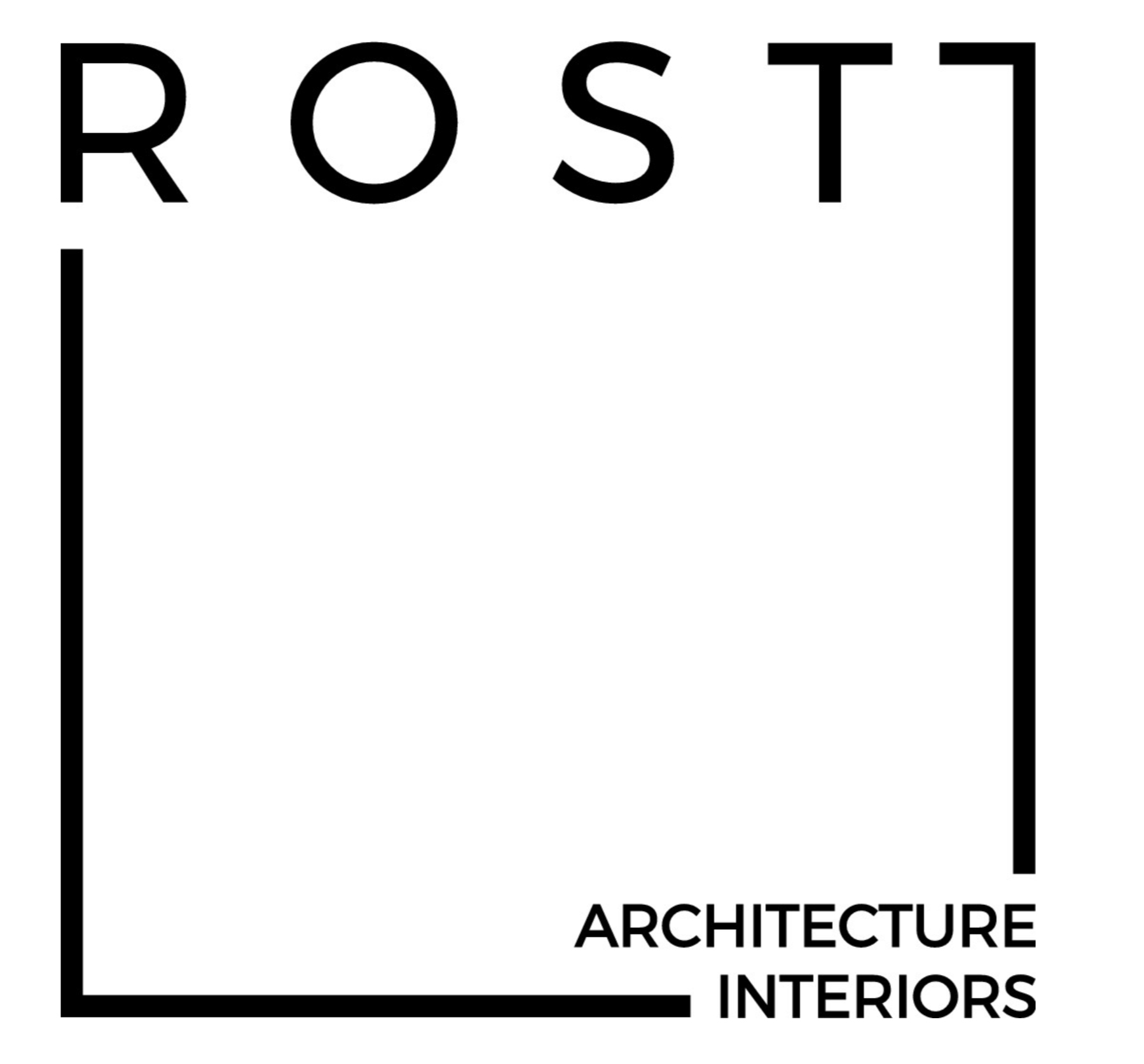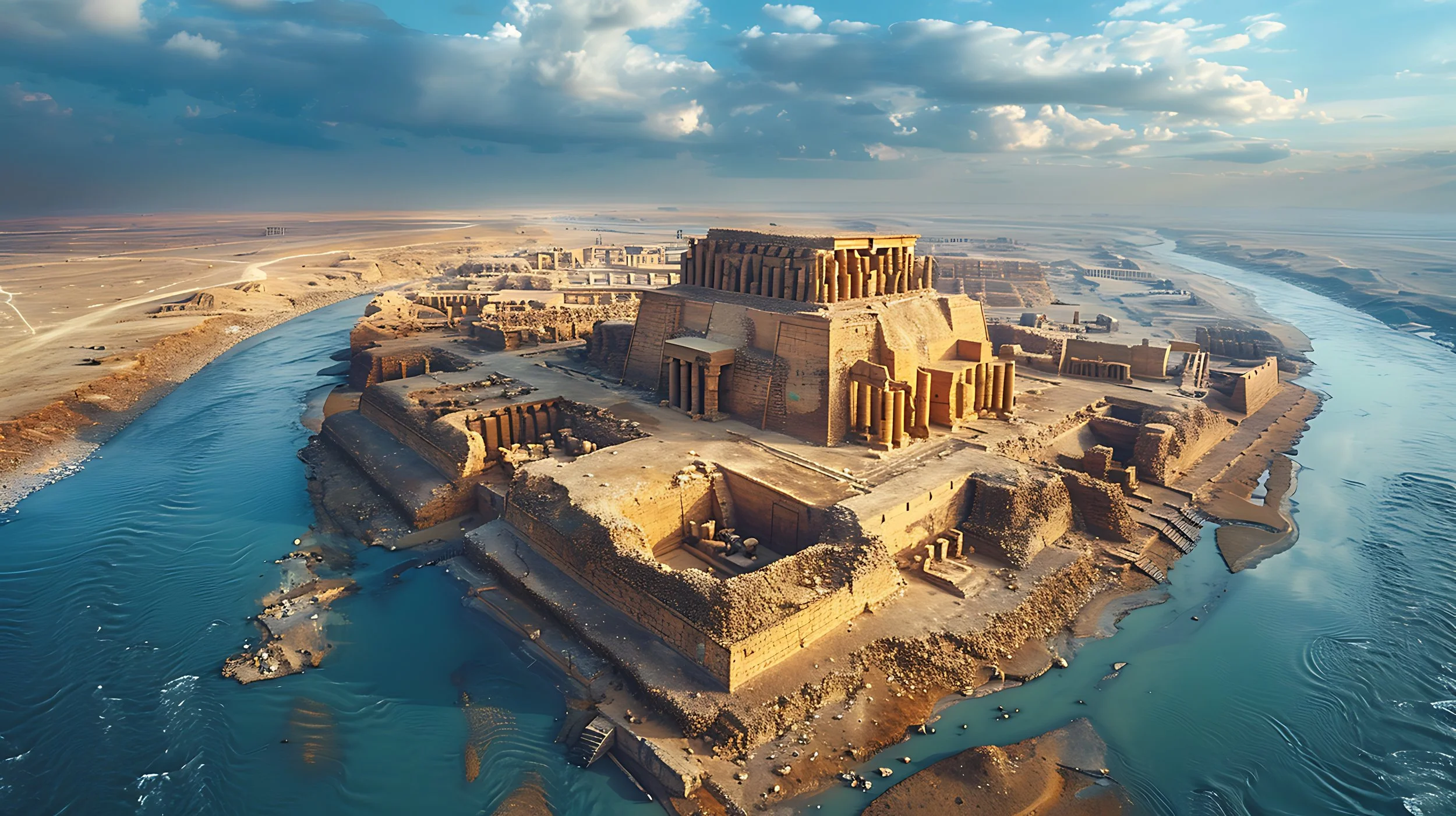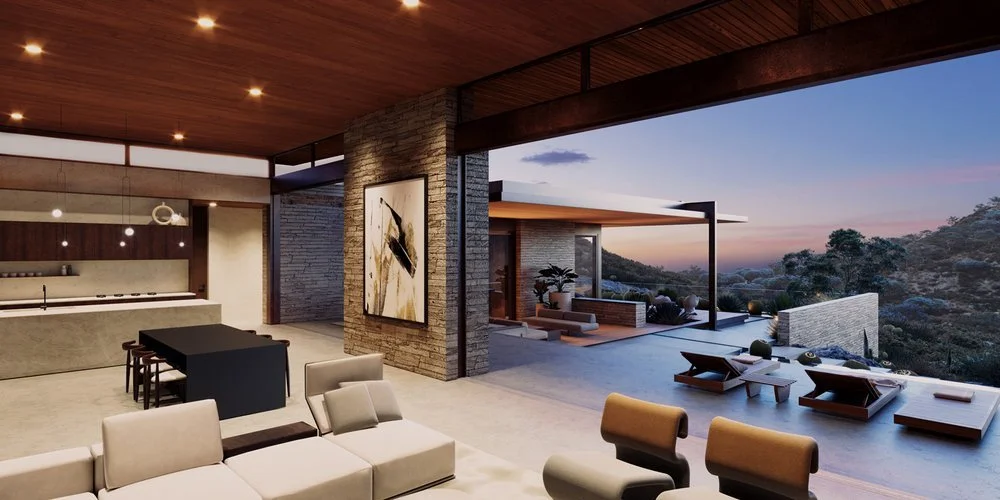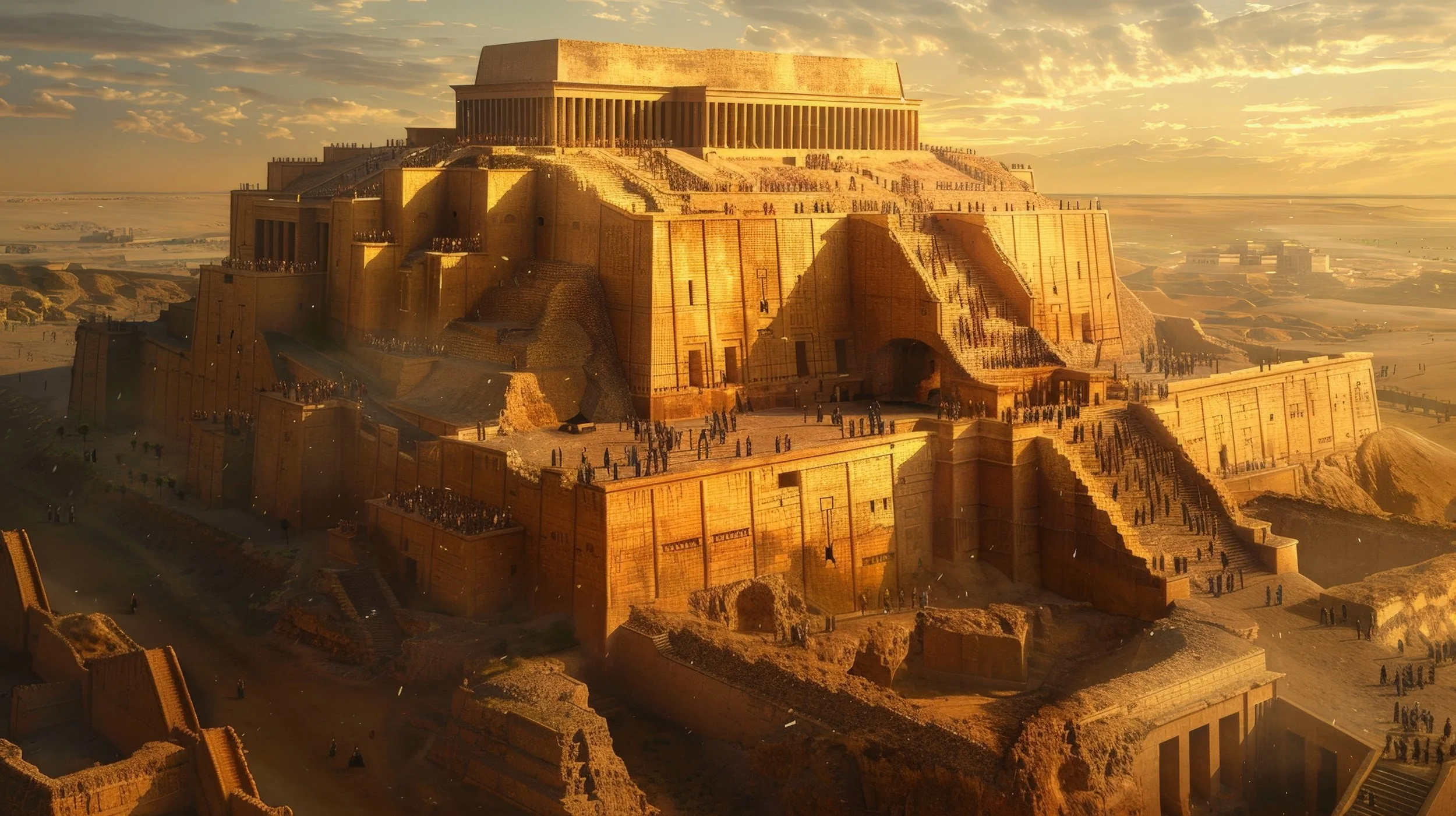Contemplations of the Built World: The Grand Louvre
Hi, my name is Mitchell Rocheleau. I'm the architect at Rost Architects in Orange County, Southern California based architecture firm and today, I want to talk a little bit about, the Grand Louvre project in Paris, France by I.M. Pei.
I'll discuss a bit about the history of the Louvre, the design process, the design theory and ideas behind the project, materials, construction systems. And then I want to talk about the significance of the project, why I think this building is worth talking about, and why it matters not only to just architects and designers, but to kind of a wider public audience and why it's culturally significant and what we can learn from this building. Things that it's done successfully and talk a little bit about potential, improvements to the project that I think could be made. I do have a very deep appreciation for this project. I think it is a very thoughtful and sensitive approach to the design problem and to the brief that was given to I.M. Pei at the time.
I visited the project in 2012 and spent several days there walking around the grounds, taking photographs and kind of studying the job and looking at the materials, construction systems, all of that, and then followed up with looking into some books, articles and reviews on the process and really got a lot of insight into the building and the thought process, which really deepened my appreciation for the work. So I'll go into a little bit about the history and start from there.
The Louvre is a product of about five centuries worth of building campaigns. At its conception, it was a modest plot of earth, sitting along the river on the outskirts of Paris, what was then the outskirts of Paris. When the Vikings began to invade the city, thick walls were erected to help prevent these attacks. In 1546, the site was turned into a palace by King Francis the First, where he and his court would reside and make home. Nearly every subsequent monarch would perform some degree of work on the Louvre: additions modifications, whatever it may be, and it remained the royal residence until about 1682. When Louis the 14th moved to Versailles. Around the French Revolution in about 1789, portions of the Louvre were converted into a museum. So, during the Napoleonic Wars, the French army plundered art and sculptures, paintings worldwide, and they needed a place to bring back and house these gifts that they had collected and display them. On September 26th, 1981, French President Francois Mitterrand announced that the entire Louvre would be made into a museum. So, at that time, only a portion of the building was used as a museum.
Mitterrand was passioned about architecture, and he wanted to really leave his mark on Paris. James Gardner notes that quote “No French leader since Napoleon the Third, more than a century before, had spent as much time and treasure on building massive projects in the capital” end quote, Mitterrand wanted the project to be completed by 1989, which would have been the centennial of the erection of the Eiffel Tower and the bicentennial of the French Revolution. Completing the project by that time would really cement his name in the history of Paris. Mitterrand appointed Emil Bassani to begin preliminary feasibility studies and assemble the project's architectural engineering team to bring the project to fruition. Many distinguished architects were considered those included Richard Meyer, Norman Foster, James Stirling, Jean Nouvel, and I.M. Pei. of course. Most of the architects worked primarily in the modern style or contemporary aesthetic, and it was clear that Mitterrand and his advisors wanted a more modern style to the project. They wanted something a little bit different than the kind of classical, historic Louvre that flank the site. This interest to have a bit more contemporary or modern aesthetic for the new project was highly controversial. Ultimately, 64 year old architect at the time, I.M. Pei, was selected. Before accepting the project, Pei would ask for about four months in advance to really sit down, learn the history, think about the Louvre of the existing structure, the history of the site, the history of the city. He really wanted to gain a deep understanding of what he was working with. This was such a historical site at the center of one of the most important cities in the world, and Pei believed that he needed to gain a very deep understanding of what he was working with. Upon his formal acceptance of the project, he would take that, four month time period to really contemplate his solution for the project.
So I'll talk a little bit about I .M.Pei. Pei was notorious for not really having an identifiable style or identifiable brand, unlike many architects of that time. He was known for trying to be very site specific and project specific, as opposed to kind of injecting his own theoretical agenda onto a job in a city. He really kind of took the approach of doing a thoughtful, thorough site analysis. This approach allowed him to gain a deep understanding of the city, and offer a unique architectural solution that illustrated, really, the essence of the place, or uncover the essence of the place without imposition of his personal stylistic or formal goals and agenda.
In the contemporary field of architecture, people are still practicing in this way, but there are a handful of groups architects, individual practitioners that are not practicing in this way. They're really forceful in their attempt to kind of inject their own personal stylistic agenda onto jobs. And I want to make it clear that this was not Pei's approach and the sensitive respectful, perspective that Pei took on the project as one of the core tenets on why I believe this project is so successful and impactful when you're visiting the site.
So after careful study, he took the four months, studied the site, studied the history, cultural context. He would ultimately accept the commission and the project would be called the Grand Louvre Project. It would be divided into really four main scopes of work. The first being the central reception area - Pyramid. This is the area that we’ll be focusing on the majority of the discussion today. The second was the restoration or refocusing of the historical facades of the three wings on the historical Louvre. The third is the archeological work on the medieval Louvre, and the fourth is the creation of the Carrousel du Louvre, which is the Louvre's massive underground shopping center.
At the site there is a large model which is amazing to look at, showing kind of these different phases of the project and has what would be the ground plane of that central courtyard in the Louvre removed. So you can see the Carrousel du Louvre and the shopping center underground area underneath the ground, which really gives you a good understanding and perspective on the magnitude of this project. This was a huge project.
Pei would assemble his architectural design team for the job. It was comprised of about 28 people. The team would move to Paris to begin the design process and be available on-site to kind of take a hands-on approach in supervising the job. The project brief called for about 92,000m² of floor area. After analyzing the site and other programmatic requirements. Pei really wrapped his head around how large and how many square meters of program this was. And quoted “It was not possible to imagine creating that much area above ground near the Louvre. Thus, we needed to put it beneath the courtyard. The proximity of the River Seine meant that we could not dig too deep without very high costs and technical problems” end quote. So, he ultimately decided to go underground. This was his first kind of big move, and Pei would need to devise a solution for patrons to enter the museum and the courtyard level to descend underground into the great reception area. The shape and the material treatment of the architectural piece that would receive these guests and bring them from that upper courtyard area down into the subterranean world that he was creating, would need to be carefully considered. This would ultimately end up being the glass pyramid that we see today. Pei understood that this piece would become the icon of the Grand Louvre project. That's the piece that people would identify the project through.
Let's talk a little bit about the glass pyramid. In an interview, Pei and his team said that they experimented with many different shapes and forms for this central piece that would be this transitional portal from above ground to this world underneath. They considered cubes, curved hemispheric shapes. However, when they looked closely at the existing historical Louvre silhouette, there was little suggestion of curve, so they decided to go against it. Pei notes that, quote “I concluded that the pyramid was the only acceptable shape, it was the most appropriate form” end quote. Pei noted that the pyramid shape converges to a single point as your eye moves vertically and eventually dissolves into thin air. The pyramid was one of the least intrusive shapes that could be used. The translucency of the pyramid was critical for Pei. It would allow maximum visibility through and around the structure to the historical buildings at the perimeter. This was, in my opinion, a highly sensitive and respectful design idea and design proposal that Pei would put forth. It really shows his ability to kind of honor the icon of the Louvre, and how deeply the three wings of the historical Louvre have been culturally significant for the city. He did not want to impose a shape or form or a building that would contend with it. He didn't want to impose a shape that would overpower it, or that would obstruct views to it. So when you think of it in that way, the level of respect that he paid to this historical structure is really quite astounding.
When many people first saw the initial proposal for the pyramidal glass shape, you know, they were confused. They were reading this as like a formal statement saying, why a pyramid? What's the meaning significance behind that? They didn't quite grasp the respectful nature or the concept that Pei was trying to get across, and that he was hoping to inject the least intrusive and most respectful kind of shape and material strategy as possible. But unfortunately, many people didn't read it that way.
In January of 1980, Pei and his team presented the proposal to authorities, and unfortunately, many critics disagreed with Pei's approach, Pei mentions that, quote “I had fully expected controversy in this instance, and I was not surprised when we were attacked. But this did not disturb me because I felt that we were right” end quote. Much of the credit for organizing the forces and traversing through the resistance can be attributed to Emil Bassani. So Bassani really believed in Pei. He believed in his solution. He understood the depth and sensitivity of a solution and was really there to support the project in general.
The main criticism that the public and critics alike had towards the project was stylistic conflict between Pei's glass pyramid and the surrounding classical buildings. French architectural classicists were upset at the thought of having a modern glass pyramid on the site, and they were looking at this as “what does this mean?” Not really looking at it through this lens that Pei was looking through the project at, and it was a matter of communicating his ideas about the shape of the ideas and the materiality of the pyramid. And once those become clear, there was a bit more of an acceptance of the project.
Through the tenacity of Pei, his team, and, the French Republic, President Francois Mitterrand. The project would gain the necessary approvals and be approved to proceed into construction.
I'll talk a little bit about the construction process and the material systems of the glass pyramid at the Louvre. Pei and the engineering team worked carefully on the engineering of the glass pyramid, with the goal of again, using the most minimal structural system available. They wanted to make this glass pyramid as transparent as they possibly could in an attempt to reconnect with that original idea in the brief that Pei had of a shape that was the most respectful as it possibly could towards the historical Louvre.
They implemented a thin, cable system developed by Nav Tech, who specialized in sailing and rigging for the America's Cup sailing boats. Kind of an interesting and innovative solution. The cable system would provide structural depth behind the glass panel system. Without, the heaviness of a kind of let's, let's say maybe a steel member. It was very, very minimal in visual weight and transparent. It was critical again for Pei and the architectural team to have the glass on the pyramid as translucent as possible. At the time, in the 1980s and early 1990s, typical architectural glass used on buildings, it was known for having a bit of a green tint in it; this is often due to the iron content in the glass.
Pei and his architectural team were very hesitant to use this type of conventional glass. They did not want the historical Louvre, which was layered behind the pyramid, set behind it, to be distorted in its color when people were viewing the Louvre through it. If the pyramid’s glass were to be green, it would give this greenish tint to the beautiful stone on the facade of the historical Louvre and that would not be in alignment with Pei's brief. So he really pushed the technical team, the manufacturers, to be able to produce the most transparent, and clear glass possible for the time. The team collaborated with, French glass firm Saint-Gobain to devise a manufacturing process using, Fontainebleau and white sand to produce the most transparent glass possible. This was an innovation for the time. The glass was then sent to England, where it was polished to create as flat a surface as possible on the surface of each panel. This would help prevent any surface distortions or reflections when looking through the glass, to the historical Louvre. Pei's team's tenacity, attention to detail and perseverance in executing these seemingly small nuances is really commendable. And I think ultimately a huge component of what makes this project so successful.
I'll talk a little bit about the experience at the Louvre. Not only was the architectural idea and concepts that Pei and his team produced, thoughtful, sensitive, skillful. The experience, I believe, was also very well thought through. There are many layers of the project that are successful and the experience, I think, was one of them. So, when you're walking in the courtyard, you come upon this transparent pyramid, when you're down inside of the Louvre and you submerge into the underground world, you look up and you have natural light filtering through this massive glass pyramid above, this vast open volume of space that you can see up through to the sky. You can also get views to the historical Louvre from that lower level. So, it's quite amazing. Around the perimeter of the pyramidal aperture in the ground plane, Pei cladded the face of that with a stone used on the facade of the Louvre. So, you get this really nice kind of dialog and harmony between the stone used in that underground world and the historical Louvre facade, which again, just really creates a connection and a deeper resonance between the two projects in between the two worlds. There are three different ways to travel down. Once you get into the glass pyramid, you can use an elevator, a spiral stair and an escalator. From the primary space, the visitor can go to one of the three different wings in the museum.
Why is the Louvre successful? Why do I think this is a project worth talking about and discussing?
First and foremost, the spaces created by Pei and his team, the experiential process of going through the building is phenomenal. The spaces feel amazing, they're impactful, well scaled; they left a lasting impact on me and I'm sure many other people.
The second reason would be the clever response to the site and the context. Again, to reiterate, Pei and his team really thought about a multilayered solution to the project. They were extremely respectful. This was a very profound and deep architectural solution. If you think about the project today you cannot strip the project down to anything but what it is today. Pei had this ability to kind of sift through all the frivolous, unnecessary things in a project and really get down to the essence of what needed to be built on site in order to communicate what he was trying to do.
In many ways, it was the least intrusive solution that he could have possibly proposed in both, where the building is sited, how it's sited, how it's submerged underground, the shape of the pyramid, the material that he chose to use, the structural system that he chose to use, the technicalities of the glass that he, you know, innovated to, be able to use in the project.
Third is the clarity and sound logic of the architectural solution. The pyramid at the Louvre was simplified and stripped away of any excess, until Pei and his team reached a point where it couldn't be reduced any further. Its clear, honest and straightforward approach was powerful and was void of any architectural fluff that would detract from the core concept that Pei had. This core concept was to honor and respect the cultural icon of a historic Louvre.
Fourth is the ability to solve the functional and practical pieces of the project. Circulation, rooms, square meter requirements, bathrooms, really simple things like that. Systems. Waterproofing. Pei was able to solve all that. This is a fundamental requirement of all projects and something that needs to be addressed as a non-negotiable item and Pei was able to solve those.
With every great architectural project, you look at them in hindsight, there's always things that could be improved or modified. I would have two comments on the Louvre.
The first would be in relationship to the courtyard surface treatment of the ground level where the glass pyramid exists. The design team placed and designed these beautiful reflecting ponds so that they would reflect the sky, it would reflect the facades of the historical Louvre and in many scenarios, reflect the glass pyramid. I mean it creates an incredible effect in the evening, especially when you get the sight lighting out in the glass pyramid. It's lit. It's really this, astounding effect. It's beautiful. However, one thing that I think, could have been implemented to soften the site a bit, some sort of vegetation, obviously not something very intrusive or deep or tall, but something to bring some nature into those spaces and soften it a bit.
The second comment really relates to technological capacities of the time when the project was built. The core of Pei's idea was this desire to make the glass pyramid virtually disappear, be as visibly transparent as possible. My comment would be could the material systems, structural systems, could those have been pushed to a greater limit during the project? Could the depth and visual weight of the structural system have been reduced even further?
I think at the time it was amazing. But the comment would be, could that have been really pushed farther. Today in contemporary building innovations, in transparency and glass technology, have really been developed. You see buildings like the Apple Building where they have these massive facades of structural glass. And again, not possible at the time, but, could systems like that have been innovated upon to really hit home this idea that Pei had about making this pyramid as visually clear and transparent as possible. This would be an exciting engineering possibility to study. I think that'd be an interesting thought exercise for today using contemporary materials and technologies to see what could actually be possible in that scenario.
Outside of that, tough to criticize the project or comment on the project. Like I had mentioned, I have a deep appreciation and respect for this work. I think the experience of it is phenomenal. Visiting it was an incredible experience and I've learned quite a bit from the job in terms of systems, technology, lighting effect, materiality, and just a way to approach a site. Learning about Pei's thought process on a site and the degree to which you consider these different things, the cultural impact, the emotional impact, the societal impact that this project would have on Paris is really commendable.
Let's talk a little bit about the Louvre today. The Louvre perhaps is the most incredible museum in the world. It houses art from almost every age and region. Each year, the attendance at the museum exceeds about 8 million people, with the demands growing in attendance. Over 30 years have passed since the opening of the Grand Louvre renovations done by Pei. So, we ask ourselves, what does the next round of, improvements, renovations, modifications on the Louvre, which is a continually evolving project over centuries, what do those improvements look like? I think that's a tough act to follow, after I.M. Pei.
Thanks for listening. I'd encourage anybody who has an interest in the Louvre project to go and visit it. There's nothing like actually experiencing it. You can view photographs and the write up that we have on our website, Rost Architects. But ultimately, I'd encourage you to go visit the site and dedicate at least a day or the better part of a day to walk around, soak it in, and really appreciate the history and the environment that was created.
Thanks so much for listening.






























Principal and Architect of ROST Architects, Mitchell Rocheleau, discusses the significance of The Grand Louvre designed by Architect I.M. Pei, the history of the Louvre, design process, design theory and ideas behind the project.